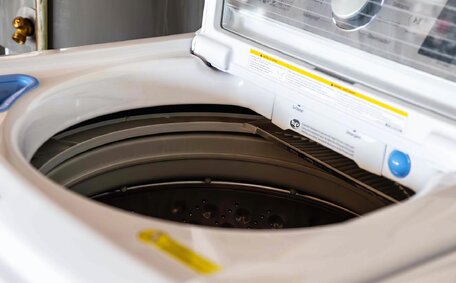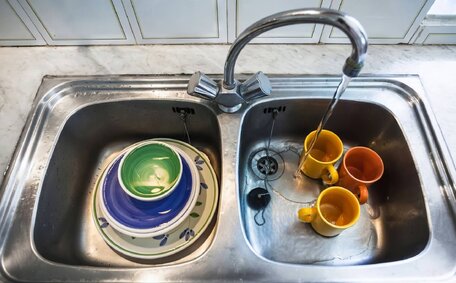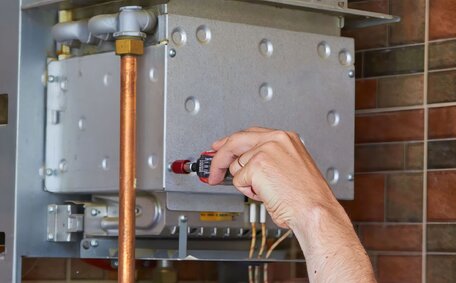Introduction to Pipe Relining and Its Eco-friendly Approach
Pipe relining, a sustainable sewer repair method, applies epoxy resin inside existing pipes without the need for full pipe replacement. This innovative trenchless technique causes minimal disruption and has a lower environmental impact than traditional methods, which involve significant excavation work.
Pipe relining creates a new, seamless interior that halts leaks, boosts water flow and blocks corrosion, all with minimal environmental impact. By focussing on the affected pipe sections only, relining offers multiple ecological benefits:
- Reduces waste - existing pipes and construction materials are not discarded into landfills
- Protects landscapes - avoids digging trenches or cutting down trees and plants
- Lowers carbon emissions - from less machinery and transportation
- Conserves resources - reduces need for new piping materials, ensuring better water flow
- Avoids issues that can contaminate surroundings - prevents sewage leaks that pollute soil
If sustainability and longevity are your priorities, pipe relining’s benefits make it a compelling long-term solution. Pondering 'do I need eco-friendly pipe repairs?' Connect with us today, and our specialists will provide further assistance.
Comparing Traditional Pipe Repair vs. Trenchless Technology
Traditional Pipe Repair Methods
Trenchless pipe repair spares the need for extensive excavation, which could otherwise prove highly disruptive and severely damaging to the environment:
- Digging large trenches damages landscapes, lawns, your garden, trees and vegetation
- Heavy machinery releases greenhouse gas emissions, potentially harming the surrounding environment and air quality
- Creates major disruption to properties, traffic and neighbourhoods
- Old pipe materials end up in landfill, wasting resources
Benefits of Trenchless Pipe Relining
Trenchless repairs, particularly pipe relining, involve inserting a new lining within the existing pipe structure, resulting in a faster, less intrusive, and more ecologically sound repair process:
- Avoids excavation and landscape destruction - no need to dig trenches
- Results in less carbon emissions from machinery by up to 90%
- Prevents wastage by reusing existing pipes which avoids replacing
- Improves service life - relined pipes can exceed the longevity of new installations
- Cuts water wastage by sealing leaks and restoring pipe flow
- Reduces disruption to traffic, utilities and the local area
When plumbing companies and homeowners decide to go green with pipe relining, they do not have to worry about the extensive environmental impact of full replacement. There are numerous benefits of trenchless methods, positioning trenchless relining as the sustainable solution.
Key Differences Between Pipe Relining and Replacement
Repairing replacing systems using pipe relining, without need for full pipe replacement, differ significantly when it comes to environmental impact:
- Pipe relining is a trenchless process that doesn’t require you to dig up yards, gardens or streets. This avoids landscape disruption and damage.
- No excavation means less air pollution and greenhouse gas emissions from heavy machinery.
- Reductions in landfill waste - relining preserves existing pipes, unlike replacement, which necessitates discarding old materials.
- The epoxy resin used in relining creates more durable pipes and is long-lasting. New replacement pipes may need replacing again sooner.
- By avoiding leaks, relining proves to be an efficient ecofriendly way to conserve water resources and prevent soil contamination.
- The smaller carbon footprint of trenchless relining makes it a more sustainable solution.
As a restoration method for current infrastructure, pipe relining is demonstrably less invasive and pollutive, also conserving resources and reducing waste, making it an environmentally superior option for pipe repair.
Minimizing Environmental Disruption with Trenchless Solutions
Trenchless pipe repair solutions, notably relining, substantially mitigate environmental impact when compared to conventional excavation methods. Here are some of the key ways trenchless technology minimises disruption:
- Diminished noise pollution - the absence of jackhammers and other clamorous equipment spares neighbourhoods from disruption
- Reduced dust and debris - avoids disturbing your customers’ soil and pavement materials
- Lower carbon emissions - less trucking and heavy machinery required
- Preserves natural habitats - avoids disturbing local wildlife, trees and vegetation
- Eliminates landfill waste by reusing existing pipes, thus bypassing the need for disposal.
- Conserves water - Prevents leaks which can cause damage to a broken pipe, contaminating soil
- Reduces property disturbance - driveways, gardens, and landscaping are kept intact
Trenchless techniques, including pipe relining, offer a cleaner and less destructive repair alternative. These practices conserve ecosystems by removing the need for excavation, enhancing their appeal as resource-preserving and waste-minimising solutions.
Waste Reduction with In Situ Pipe Rehabilitation
Other waste reduction benefits include:
- Lower disposal costs - no need to pay waste collection and landfill fees when reusing pipes.
- Reduced transportation pollution - fewer materials to haul away
- Reuses existing assets rather than manufacturing new pipes
- No excess piping materials left over after installations
- Durable linings extend the pipe’s service life, sidestepping frequent repairs and subsequent waste.
By extending the lifespan, ageing pipes can be maintained in an eco-friendly manner, with trenchless pipe relining helping to lower environmental impact and landfill waste. Speak with our team, who can help you learn more about these sustainable pipe rehab solutions.
Other waste reduction benefits include:
With cities and countries aiming for carbon neutrality, sustainable solutions like pipe relining that reduce emissions are essential. Trenchless repair, an ecofriendly solution, not only fixes plumbing issues but also shrinks the carbon footprint compared to traditional pipe replacement.
Preserving Landscapes and Natural Resources
Pipe relining, ideal for repairing your plumbing systems, offers significant environmental benefits by preserving landscapes and natural resources. This trenchless method avoids the extensive digging and ground disruption of traditional pipe replacement.
Traditional large-scale excavation often causes significant damage to lawns, gardens, trees, and vegetation, sometimes necessitating the removal of fences and other landscaping structures. However, pipe relining circumvents this by rehabilitating pipes in their present location.
The absence of trench excavation leaves local ecosystems undisturbed, positively influencing the preservation of wildlife habitats and leaving trees, plants, and grassy areas intact, all while preventing soil erosion and runoff typically associated with trenching.
Wildlife habitats remain pristine, free from machinery noise or pollution and the absence of disruptive actions. Key underground roots, crucial to the stability of flora, are also protected.
By preserving landscapes around properties and neighbourhoods, pipe relining can lead other efforts in environmental conservation. It protects natural assets that would otherwise end up as landfill from extensive digging operations.
The reduced need for new piping materials can also conserve resources, which would be a noteworthy benefit. Pipe relining allows existing pipes to be reused rather than discarded.
Contact us today to discover how repairing damaged pipes through pipe relining can benefit the environment by preserving landscapes, vegetation and natural resources compared to traditional replacement projects.
The Role of Durable Pipe Lining Materials
Modern pipe relining materials are designed for their durability, long-term performance, and environmental sustainability, allowing relined pipes to endure for many years and reducing the need for further repairs or replacements.
Many lining systems like Brawoliner Pipe Relining are certified for their environmental benefits. The epoxy resins create a robust barrier coating that renews old pipes while preventing further corrosion or damage.
Key benefits of durable pipe lining materials include:
- Extended lifespan - the linings are capable of enduring over 50 years
- Reduces the likelihood of future repairs and replacements
- Diminishes the need for new piping materials
- Prevents leaks and contamination
- Enhances flow efficiency and water pressure
The longevity of modern sewer pipes lining systems makes them a sustainable solution. Replacing old pipes through in-place renewal conserves resources and avoids environmental costs typically associated with traditional replacement projects.
Contact our team to learn more about our durable and eco-friendly trenchless pipe lining solutions.
Key beneeed for new piping materials
Prevents leaks and contaminationCost Analysis: Pipe Relining vs. Replacement
CIPP pipe relining offers sewer solutions with significant cost savings compared to full pienses for heavy machinery, materials, labour and waste disposal.
Here’s a cost comparison of curedinplace pipe relining vs replacement:
- Repairing a plumbing drain cleaning pipe through relining costs $80-250 per linear foot on average
- Full pipe replacement averages $200-500 per linear foot
- Relining takes 1-2 days with minimal disruption
- Replacement takes 3-5 days with major excavation
Other cost benefits of pipe relining include:
- Long lifespan results in a significant repair reduction, avoiding frequent replacements
- Prevents property damage and restoration expenses
- Lowers costs from water waste due to leaks
- Reduces carbon taxes and landfill fees
Pipe relining, with its reduced material consumption and waste, emerges as an economical option, ensuring remarkable cost-efficiency. The cost savings accumulate from the initial repair through to the extended lifespan of the relined pipe. Overall, it’s a more affordable and sustainable solution than replacement.
Case Studies Demonstrating Eco-friendly Impact
Pipe relining provides measurable environmental benefits as evidenced by real-world case studies. One example is a residential relining project in Dallas, Texas. Traditional replacement of failing cast iron drainage pipes would have produced over 80 tonnes of waste. The trenchless relining approach conserved resources and avoided this landfill contribution.
By rehabilitating sewer lines in place, there were no excavator emissions or need to destroy the surrounding landscape and vegetation.
On a larger scale, the City of Tyler in Texas utilised pipe relining for sewer line rehabilitation, making it a major project. Over 100 miles of lines were restored at a fraction of the cost of replacement, with relining saving an estimated 5,000 tonnes of waste. The minimal invasive approach prevented thousands of mature trees from being destroyed and eliminated nearly 3,000 truck trips that would have been required for material and waste transport.
These case studies confirm that pipe relining indeed offers tangible environmental benefits over traditional replacement. Trenchless techniques achieve quantifiable reductions in waste, emissions, and ecological disruption. With the environmental benefits trenchless methods offer, including lower costs and better sustainability, pipe relining stands out as the superior modern solution.
The Future of Sustainable Pipe Solutions
As environmental consciousness increases, so does the demand for sustainable construction practices, which promises to spur further evolution in trenchless technology. Choosing trenchless options over traditional methods enables the conservation of resources, the reduction of waste, and a lower carbon footprint, reaping benefits well into the future.
Our plumbing services can offer eco-friendly solutions, guiding you towards sustainable repair choices. The advent of robotics and AI stands to further enhance relining procedures, boosting both efficiency and accuracy, making advanced pipe relining a leading eco-conscious repair practice.






